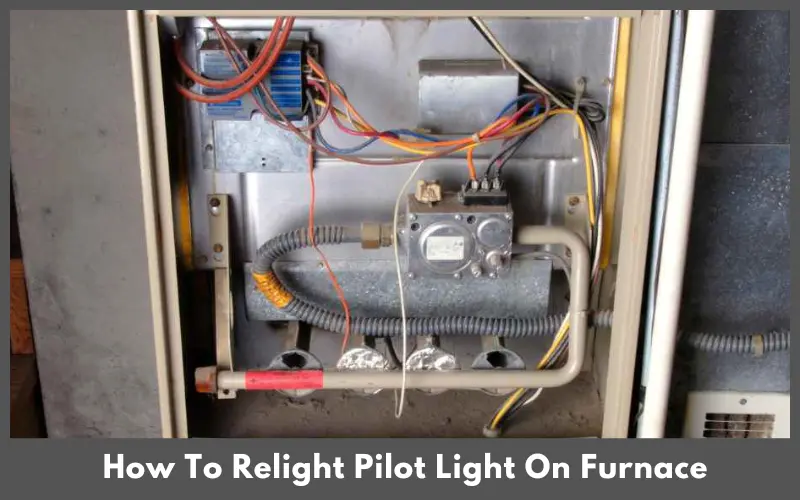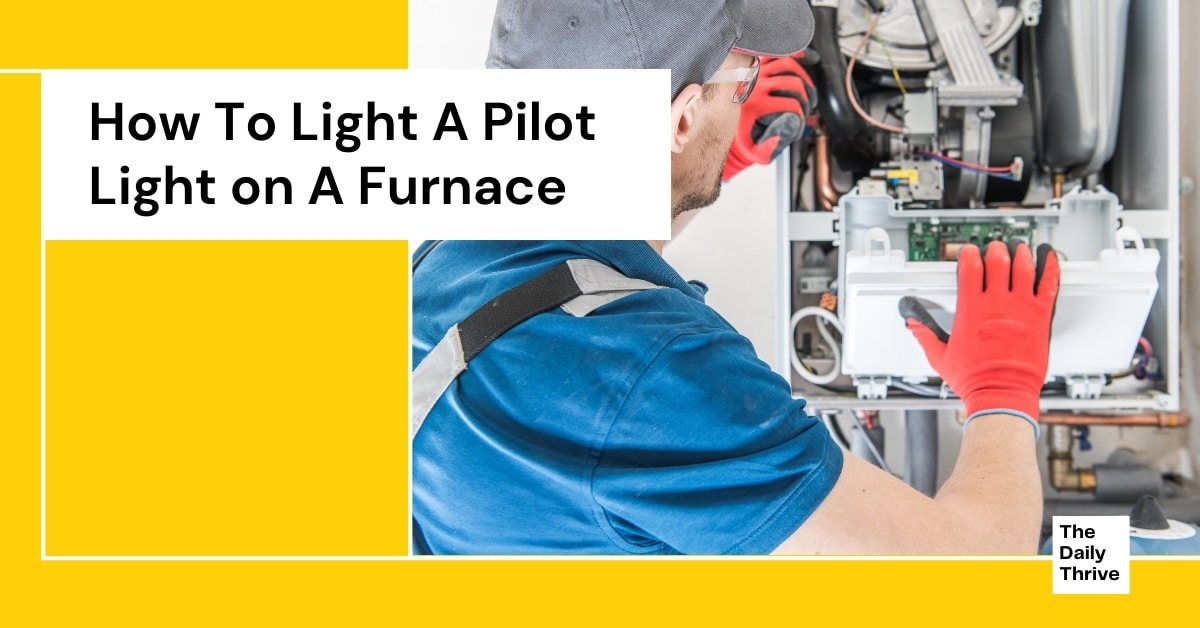How Do You Light A Pilot On A Furnace
:max_bytes(150000):strip_icc()/repairman-with-digital-infrared-thermometer-checks-gas-furnace-output-temperature-183783103-5c50d9ea4cedfd0001f911c7.jpg)
A pilot light is a small, continuous flame that ignites the main burner in older furnaces. While newer furnaces primarily use electronic ignition systems, many homes, especially those with older HVAC setups, still rely on pilot lights. Knowing how to safely light a pilot light is crucial for homeowners, HVAC technicians, and facility managers alike. This article provides a step-by-step guide to lighting a furnace pilot light, along with troubleshooting tips and safety precautions.
Understanding Your Furnace and Pilot Light System
Before attempting to light a pilot light, it's essential to understand the components involved. A typical pilot light system consists of the following:
- Gas Valve: Controls the flow of gas to the furnace.
- Pilot Assembly: Contains the pilot light orifice, igniter (if applicable), and thermocouple.
- Thermocouple: A safety device that shuts off the gas supply if the pilot light goes out. It generates a small electrical current when heated by the pilot flame.
- Gas Line: Supplies gas to the furnace and pilot assembly.
- Pilot Light Access Panel: A door or panel on the furnace that provides access to the pilot light assembly.
Identifying the Pilot Light System
The first step is to identify whether your furnace uses a pilot light system. Look for a small access panel near the bottom of the furnace. This panel typically has instructions printed on it, often including a diagram of the pilot light assembly. If you don't see an access panel or instructions, consult your furnace's owner's manual.
Alternatively, you can visually inspect the burner area. If you see a small, constantly burning flame (when the furnace is off), then you have a pilot light system. In contrast, newer furnaces with electronic ignition systems will not have a standing flame.
Step-by-Step Guide to Lighting a Pilot Light
Follow these steps carefully to safely light your furnace pilot light:
- Turn Off the Gas Supply: Locate the gas shut-off valve near the furnace. It's typically a yellow handle on the gas line. Turn the valve to the "OFF" position. The handle should be perpendicular to the gas line. Wait at least five minutes to allow any accumulated gas to dissipate. This step is crucial for safety and prevents potential explosions.
- Locate the Pilot Light Assembly: Open the pilot light access panel on the furnace. You should see the pilot light assembly, which includes the pilot light orifice and, in some cases, an igniter button.
- Set the Gas Valve to "Pilot": Locate the gas valve control knob. It usually has three settings: "ON," "OFF," and "PILOT." Turn the knob to the "PILOT" position. You may need to push and hold the knob down while turning it to this position.
- Light the Pilot Light: While holding down the gas valve control knob, use a long-handled lighter (specifically designed for appliances) or a lit match to ignite the pilot light. Position the flame near the pilot light orifice. You may need to try several times before the pilot light catches.
- Hold the Gas Valve Control Knob: Continue to hold down the gas valve control knob for about 30-60 seconds *after* the pilot light ignites. This allows the thermocouple to heat up and generate enough current to keep the gas valve open. If you release the knob too soon, the pilot light will likely go out.
- Release the Gas Valve Control Knob: After holding the knob for the specified time, slowly release it. The pilot light should remain lit. If it goes out, repeat steps 3-5. If it continues to go out after several attempts, there may be a problem with the thermocouple or gas supply.
- Turn the Gas Valve to "ON": Once the pilot light is burning steadily, turn the gas valve control knob to the "ON" position. The main burner should ignite when the thermostat calls for heat.
- Replace the Access Panel: Securely replace the pilot light access panel.
Troubleshooting Common Pilot Light Problems
If you're having trouble lighting or maintaining a pilot light, consider these common issues:
- Pilot Light Won't Light:
- No Gas Supply: Ensure the gas valve is open and that there is gas service to your home. Check other gas appliances to confirm gas flow.
- Clogged Pilot Orifice: A clogged orifice can prevent gas from flowing properly. Use a thin wire or compressed air to carefully clean the orifice.
- Faulty Igniter: If your furnace has an electronic igniter, it may be faulty. Test the igniter with a multimeter or consult a qualified HVAC technician.
- Pilot Light Goes Out:
- Faulty Thermocouple: A weak or faulty thermocouple may not generate enough current to keep the gas valve open. Replace the thermocouple.
- Drafts: Drafts can extinguish the pilot light. Check for open windows or doors near the furnace.
- Low Gas Pressure: Low gas pressure can cause the pilot light to be unstable. Contact your gas company to check the pressure.
- Dirty Flame Sensor (for systems with flame sensors): A dirty flame sensor can prevent the main burner from staying lit, which can indirectly cause the pilot light to go out in some systems. Clean the flame sensor with fine steel wool.
- Yellow or Orange Pilot Light Flame:
- Dirty Pilot Orifice: A dirty orifice can cause the flame to burn inefficiently. Clean the orifice.
- Insufficient Air Supply: Ensure there is adequate air supply to the furnace. Check for obstructions around the furnace.
Safety Precautions
Working with gas appliances can be dangerous. Follow these safety precautions:
- Never smoke or use open flames while working on a gas appliance.
- If you smell gas, immediately evacuate the area and call your gas company from a safe location.
- Ensure proper ventilation when working on a gas appliance.
- If you are not comfortable working on gas appliances, contact a qualified HVAC technician.
- Always follow the manufacturer's instructions for your specific furnace model.
Cost and Efficiency Considerations
While pilot light furnaces are generally less expensive to purchase initially, they are also less energy-efficient than newer furnaces with electronic ignition systems. The continuous burning pilot light consumes gas even when the furnace is not actively heating. Over the lifespan of the furnace, this can result in higher energy bills. Newer furnaces with electronic ignition only use energy when igniting the burner, resulting in significant energy savings.
Consider the following cost and efficiency factors when comparing pilot light furnaces to newer models:
- Initial Cost: Pilot light furnaces typically have a lower upfront cost compared to furnaces with electronic ignition.
- Energy Efficiency: Pilot light furnaces generally have lower Annual Fuel Utilization Efficiency (AFUE) ratings compared to newer models. AFUE measures the efficiency of a furnace in converting fuel to heat.
- Operating Costs: The continuous burning pilot light increases operating costs due to wasted gas.
- Maintenance: Pilot light systems may require more frequent maintenance due to the potential for clogged orifices and faulty thermocouples.
For example, a furnace with an 80% AFUE rating will convert 80% of the fuel it consumes into heat, while a furnace with a 95% AFUE rating will convert 95%. The higher the AFUE rating, the more efficient the furnace and the lower your energy bills will be. Modern, high-efficiency furnaces often feature sealed combustion and variable-speed blowers, further enhancing their energy performance.
When to Call a Professional
While this guide provides detailed instructions for lighting a pilot light, there are situations where it's best to call a qualified HVAC technician:
- You smell gas after attempting to light the pilot light.
- The pilot light continues to go out after several attempts.
- You are not comfortable working on gas appliances.
- You suspect a more serious problem with your furnace.
A professional HVAC technician can diagnose and repair any issues with your furnace, ensuring its safe and efficient operation. Regular maintenance by a qualified technician can also extend the lifespan of your furnace and prevent costly repairs.
Understanding how to light a pilot light safely and effectively is an essential skill for homeowners, HVAC technicians, and facility managers. By following the steps outlined in this guide and taking the necessary safety precautions, you can keep your furnace running smoothly and efficiently. However, always prioritize safety and consult a professional when in doubt.








:max_bytes(150000):strip_icc()/checking-the-furnace-77890266-5c50db64c9e77c0001d76385.jpg)

